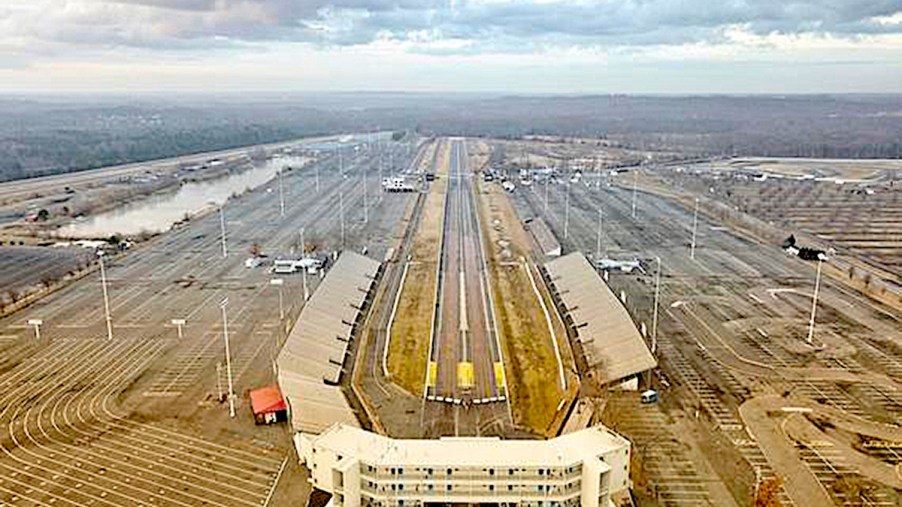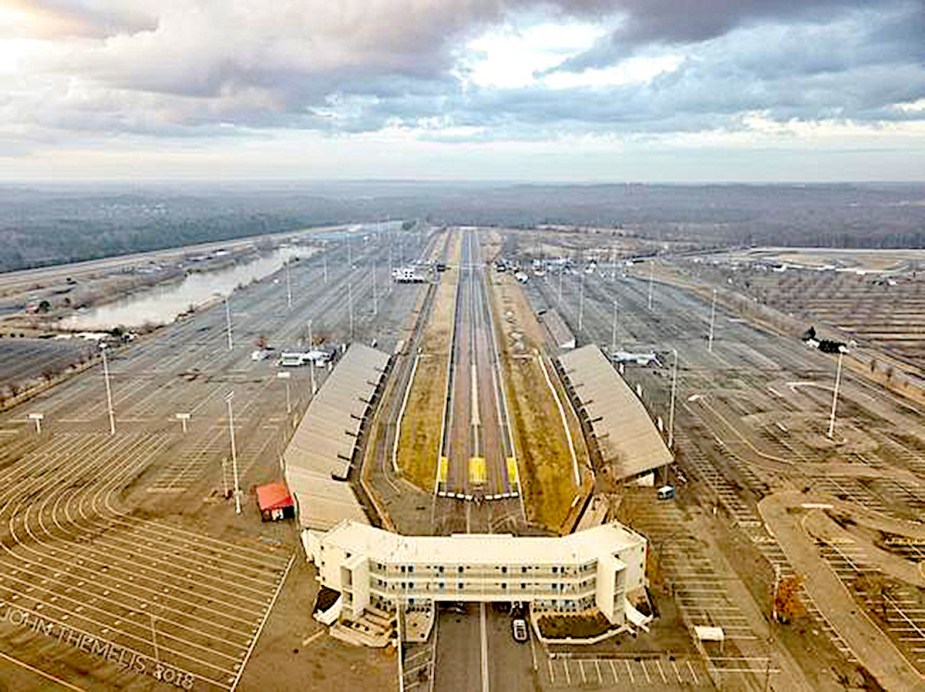
Famous Englishtown Drag Strip Was Killed: Now It’s Reopening for Drifting
For drag racers on the east coast, Englishtown Raceway Park in New Jersey was like a drag racing shrine. So it was unfathomable when Englishtown was closed in 2019. But rather than meeting the fate of so many other drag strips across the country, it survives today. But not as a drag strip but, instead, as a different racing venue. Englishtown is still here, but now as a Formula Drift track.

To be clear, raceway heads felt it is still the best place for car enthusiasts entertainment. It is located right between New York and Philadelphia, and was home to the NHRA SummerNationals for years. It has kept its drag strip grandstands and hotel suites. But the course is now a figure-eight course plunked right over the former drag strip.
No need to tear out all of that built-in racing accommodations. Instead, organizers in short order got a drift track. After all, those grandstands, hospitality suites, the timing tower, and other infrastructure function just as well for drifting events.

And the former owners Michael Napp and his family still own and operate the site. Napp, who first worked at Englishtown in 1977 when he was 15, has deep drag racing roots. And surprisingly, the first drifting event began at Englishtown in 2002, not 2022. It was in the parking lot, though.
And it continued for years every Wednesday night next to drag racing time trials taking place at the strip. As it grew, the parking lot got improvements to make the drifting much safer for both drivers and spectators. Then, a tough decision needed to be made.

“The land cost to sit here is just astronomical,” Napp told Pasmag. “To do the NHRA national event, you basically needed every square inch of the facility for that one event. Every square inch wasn’t producing money, so it really wasn’t enough to float the place.”
And even Englishtown’s own large events didn’t need the 425 acres. “It couldn’t support the size of this facility at this location with the given schedule that we had and what we could do.” Adding to the decision was the addition of storage facilities.
With Napp wanting to expand in storage, the city mandated he could only do it on the 425 acres. So that would cut into the space NHRA needed for its once-a-year event. So the city was partially to blame, as Napp looked to monetize the property better with drifting events.

There was a time when an NHRA national event brought in huge amounts of revenue. But unfortunately, times are changing. NHRA has seen numerous venues cave to better ways to monetize drag strip properties. This usually means housing or expanding office and/or industrial parks.
But to shift use to a different form of car racing shows the predicament drag racing is now encountering. While NHRA slowly alters rules and classes, even allowing electric cars to compete, it doesn’t seem to be enough. The magic of those Top Fuel launches blistering down the quarter-mile is dimming.
While not meant to be a treatise on the NHRA, if it has big plans to bring back the excitement, it would be best to launch those plans soon. Otherwise, drag racing will only be a distant memory, like those thrilling nights of quarter-mile pounders at Englishtown.



